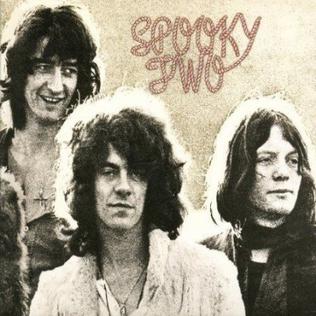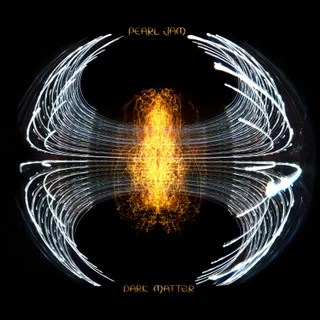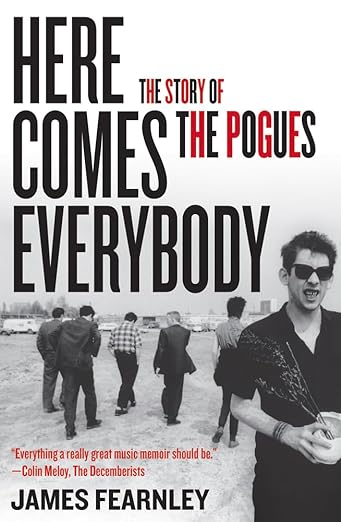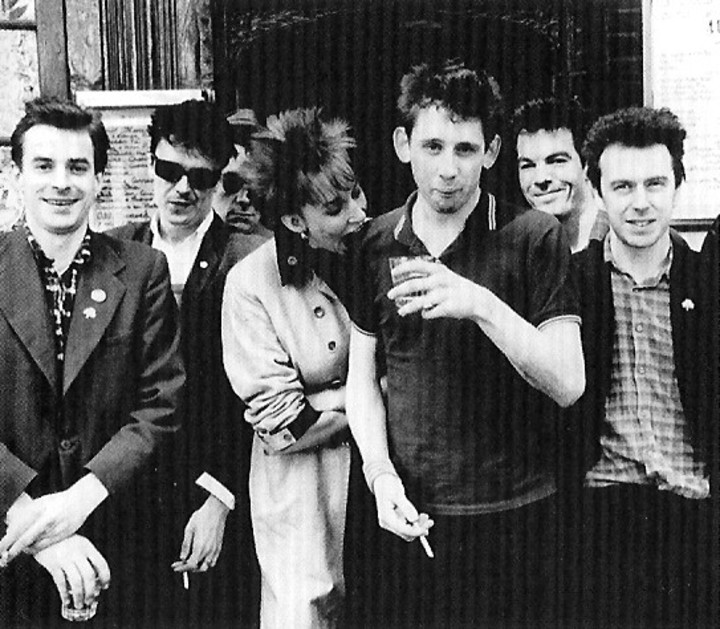 A simple drum beat opens the festivities here, accompanied by various grunts from the singer who’s warming up in the wings, before the incredibly loud, magisterial organ comes in. Spooky Tooth has arrived and, with them, the beginnings of the Progressive Rock movement that would flower in the following years.
A simple drum beat opens the festivities here, accompanied by various grunts from the singer who’s warming up in the wings, before the incredibly loud, magisterial organ comes in. Spooky Tooth has arrived and, with them, the beginnings of the Progressive Rock movement that would flower in the following years.
Like pretty much every type of music, Progressive Rock has many fathers. The Moody Blues introduced spoken word poetry, themed albums, and flutes into the rock landscape. The Nice, featuring Keith Emerson who had done a spell in Spooky Tooth before they recorded their first album It’s All About, brought classical influences and loud organs into the mix and served as the embryonic version of Emerson, Lake, and Palmer. But lost to the ages in this lineage is Spooky Tooth, a tight outfit featuring two keyboardists/singers that knew how to rattle walls with both their keyboards and their voices. Mike Harrison was a blues singer who took no prisoners, his powerful voice booming out like a less guttural version of Joe Cocker. His is the dominant vocal presence on the album, with Gary Wright (of “Dream Weaver” fame) joining in for impossibly high harmonies and the occasional lead.
“Evil Woman” is considered by many to be the album’s (and the band’s) defining moment and it’s safe to say that everything that made up Spooky Tooth is included in the song: gnarly guitars, loud keyboards, Harrison’s blues belting, Wright’s screaming falsetto. Their swapping of lines on “Evil Woman” is thrilling, though the song’s nearly nine minutes does get a bit wearing by the end. For me, the real gems on the album are the remaining tracks. While nothing says “Spooky Tooth” quite like “Evil Woman” does, the other tracks are even better.
“Waiting For the Wind” and “Feelin’ Bad” begin the proceedings with Harrison singing in his best bluesy voice and the choruses increasing in both volume and intensity. There really wasn’t another band who sounded quite like this in 1969, when Spooky Two was released. Keith Emerson’s Nice had a loud organ sound, but were far too wrapped up in their classical pretensions. Emerson played like Bach on speed; Spooky Tooth played like they were in the Cadet Chapel at West Point when God said “Let there be rock.”
Elsewhere, “Lost in My Dream” shows a psychedelic influence, “Hangman Hang My Shell On A Tree” brings the album to a close with a lightly strummed guitar and heavy gospel vocal influences that build to a conclusion featuring the band playing and harmonizing as well as any of the other bands of their day. The album also features some guest appearances, though all are uncredited. Steve Winwood shows up on piano on “I’ve Got Enough Heartaches,” a plaintive gospel-tinged number. Joe Cocker lends his backing vocal to “Feelin’ Bad” and Dave Mason appears on the ballad “That Was Only Yesterday” playing his trusty guitar.
Perhaps the most interesting footnote to this album is the tough rocker “Better By You, Better Than Me” which caused an enormous controversy in the 1980s after the heavy metal band Judas Priest’s 1978 cover version got discovered by the Mothers of Prevention (as Frank Zappa dubbed them). The notorious trial that accused Priest of hiding in their music secret messages that led people to kill themselves, an absolutely ridiculous charge, was based on a cover of a Spooky Tooth song from this album. For the record, Judas Priest weren’t hiding backwards suicide exhortations in their music, and Spooky Tooth’s version of the song is better.
The band began to fracture after this album, though they hung on in name until the mid-1970s as a shell of what they were here. Guitarist Luther Grosvenor left to join Mott the Hoople and changed his name to Aerial Bender. Gary Wright became a session player who worked with George Harrison quite a bit and achieved massive success with “Dream Weaver.” Drummer Mike Kellie eventually signed up with the punk rock band The Only Ones, famous for their classic “Another Girl, Another Planet”. Bassist Greg Ridley joined Humble Pie.
Since Spooky Two was one of the forerunners of Progressive Rock, it also was not a victim to the excesses of that genre. Only one song here tops six minutes and the entire album is a tight, concise 37 minutes long. It would have been nice if Yes and ELP learned that lesson and remembered that they were writing songs, not symphonies. I’d like Prog Rock a lot more if they had.
Grade: A



 It’s an easy mistake to make, to judge The Monkees by their hit singles without ever diving any deeper. After all, it’s not like they were a real band driven to make artistic statements over the course of an LP. But easy or not, it’s a mistake. In fact, the Monkees albums are a virtual treasure trove of potential hits; with a band constructed to be a hit machine, virtually all of the songs that were given to them were viewed as potential singles, and the songs written by the band members were their attempts to break the stranglehold the producers held over their product.
It’s an easy mistake to make, to judge The Monkees by their hit singles without ever diving any deeper. After all, it’s not like they were a real band driven to make artistic statements over the course of an LP. But easy or not, it’s a mistake. In fact, the Monkees albums are a virtual treasure trove of potential hits; with a band constructed to be a hit machine, virtually all of the songs that were given to them were viewed as potential singles, and the songs written by the band members were their attempts to break the stranglehold the producers held over their product. Dissolution never sounded better than The Pogues. It seems almost churlish to ask how good the band would have been if they had tempered their wildly self-destructive tendencies and concentrated on the music. In his new memoir, Pogues accordionist and multi-instrumentalist James Fearnley asks the question whether it was Shane MacGowan’s headlong pursuit of oblivion that made him such a great artist. He doesn’t answer because there is no answer. Shane MacGowan was who he was, and never changed. The fact that he made it to the age of 65 before succumbing to his lifestyle is testament to the man’s constitution.
Dissolution never sounded better than The Pogues. It seems almost churlish to ask how good the band would have been if they had tempered their wildly self-destructive tendencies and concentrated on the music. In his new memoir, Pogues accordionist and multi-instrumentalist James Fearnley asks the question whether it was Shane MacGowan’s headlong pursuit of oblivion that made him such a great artist. He doesn’t answer because there is no answer. Shane MacGowan was who he was, and never changed. The fact that he made it to the age of 65 before succumbing to his lifestyle is testament to the man’s constitution.